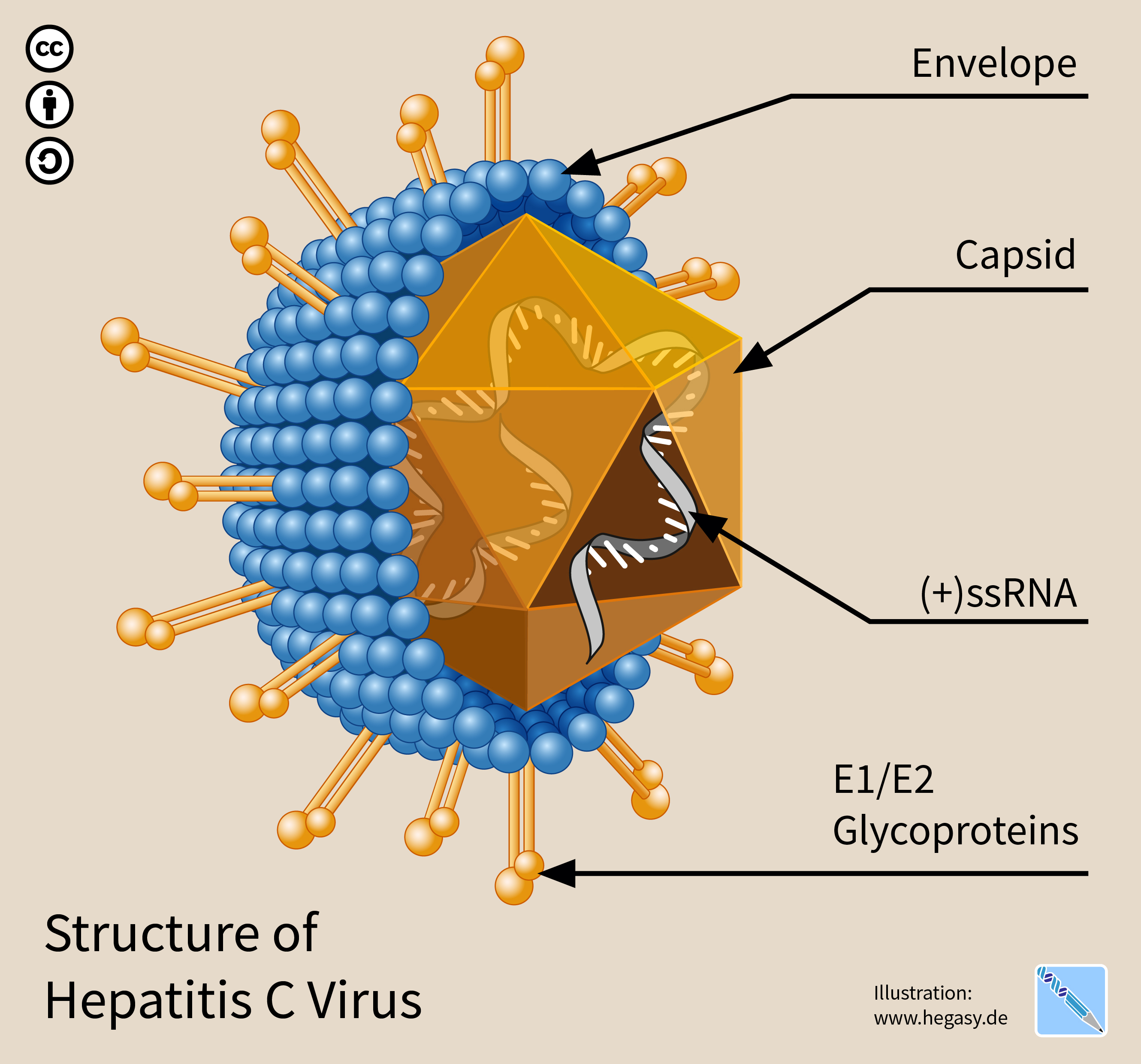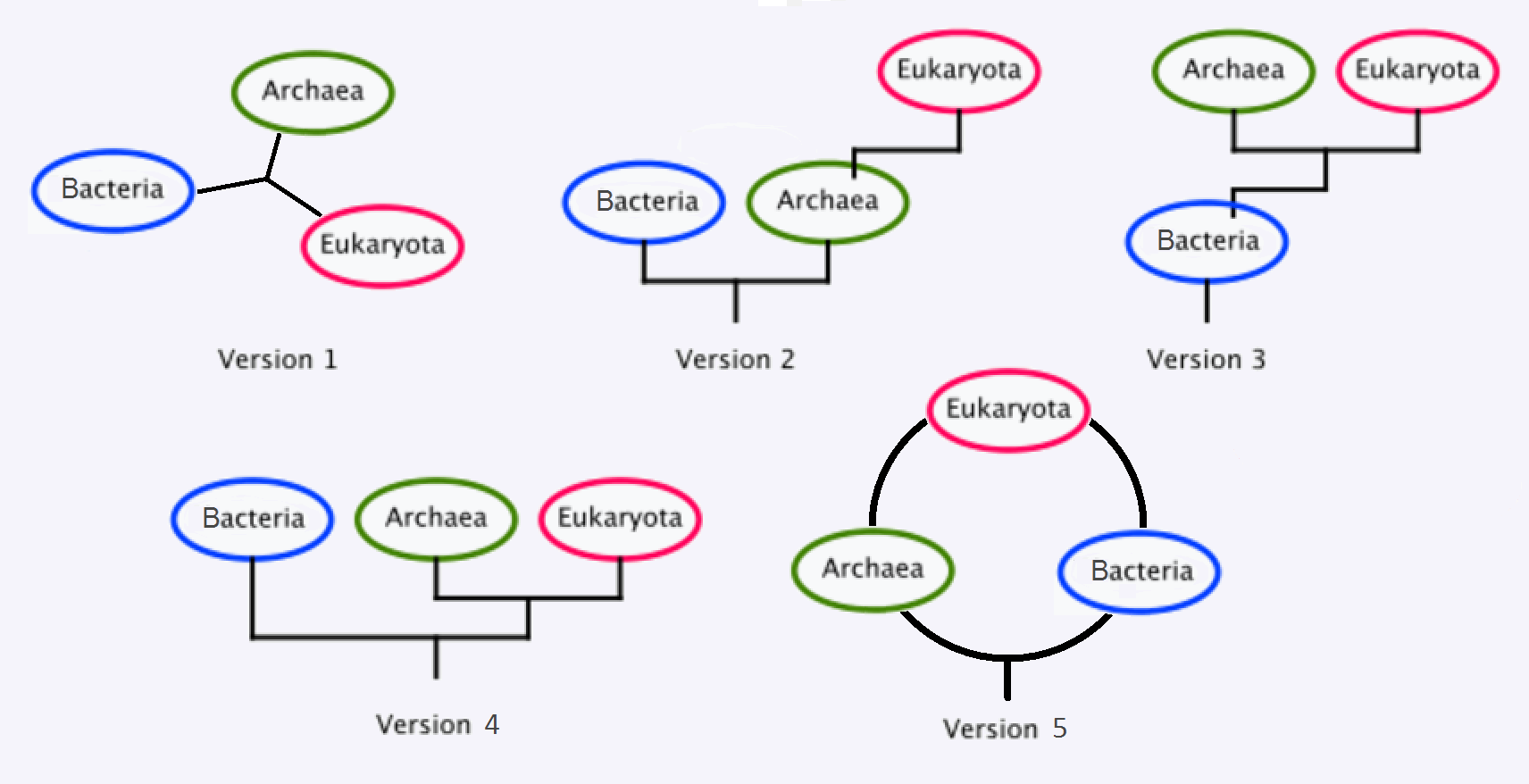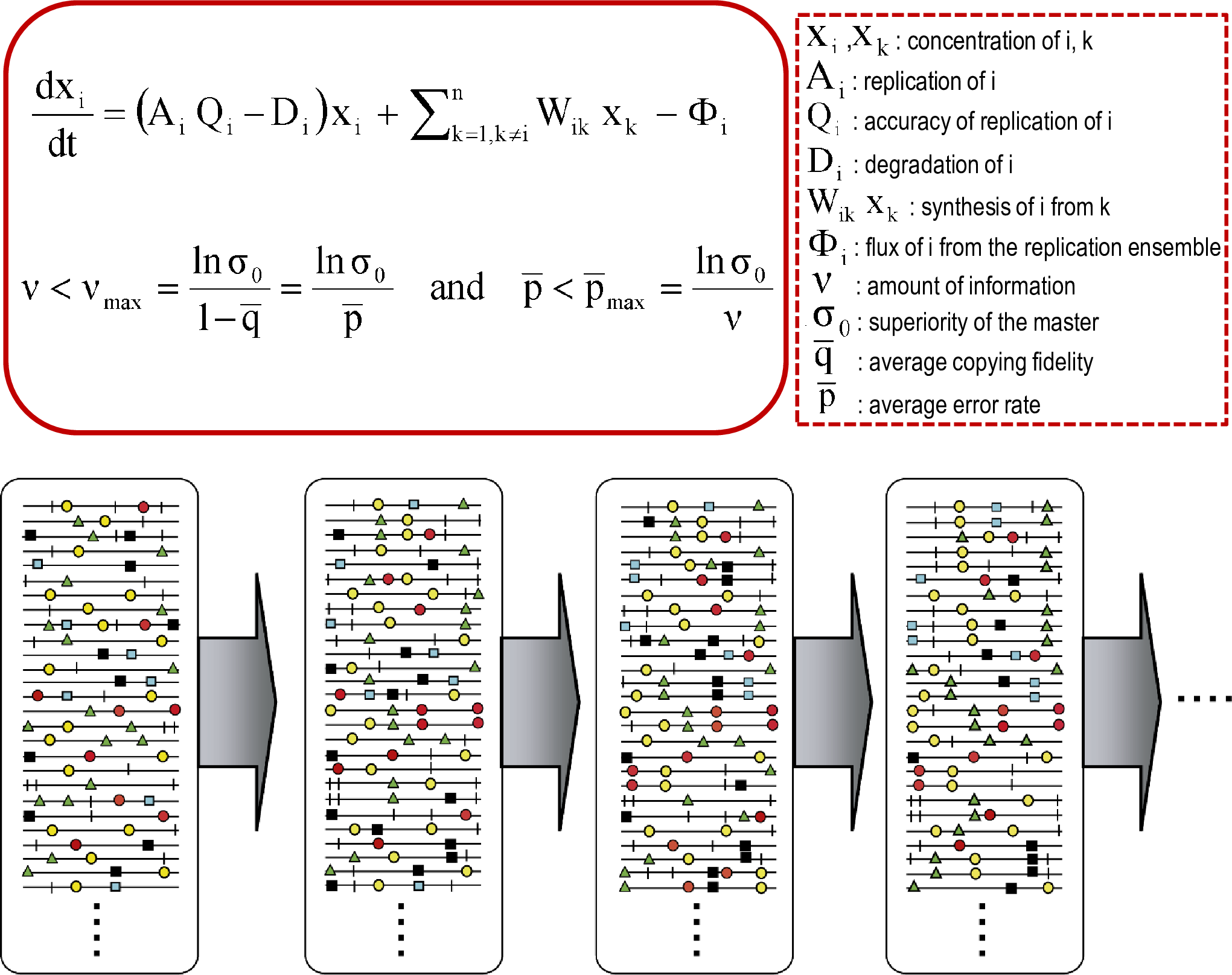|
Virus Evolution
Viral evolution is a subfield of evolutionary biology and virology concerned with the evolution of viruses. Viruses have short generation times, and many—in particular RNA viruses—have relatively high mutation rates (on the order of one point mutation or more per genome per round of replication). Although most viral mutations confer no benefit and often even prove deleterious to viruses, the rapid rate of viral mutation combined with natural selection allows viruses to quickly adapt to changes in their host environment. In addition, because viruses typically produce many copies in an infected host, mutated genes can be passed on to many offspring quickly. Although the chance of mutations and evolution can change depending on the type of virus (e.g., double stranded DNA, double stranded RNA, or single stranded DNA), viruses overall have high chances for mutations. Viral evolution is an important aspect of the epidemiology of viral diseases such as influenza (influenza virus), ... [...More Info...] [...Related Items...] OR: [Wikipedia] [Google] [Baidu] |
Evolutionary Biology
Evolutionary biology is the subfield of biology that studies the evolutionary processes such as natural selection, common descent, and speciation that produced the diversity of life on Earth. In the 1930s, the discipline of evolutionary biology emerged through what Julian Huxley called the Modern synthesis (20th century), modern synthesis of understanding, from previously unrelated fields of biological research, such as genetics and ecology, systematics, and paleontology. The investigational range of current research has widened to encompass the genetic architecture of adaptation, molecular evolution, and the different forces that contribute to evolution, such as sexual selection, genetic drift, and biogeography. The newer field of evolutionary developmental biology ("evo-devo") investigates how embryogenesis is controlled, thus yielding a wider synthesis that integrates developmental biology with the fields of study covered by the earlier evolutionary synthesis. Subfields ... [...More Info...] [...Related Items...] OR: [Wikipedia] [Google] [Baidu] |
Hepatitis C Virus
The hepatitis C virus (HCV) is a small (55–65 nm in size), enveloped, positive-sense single-stranded RNA virus of the family ''Flaviviridae''. The hepatitis C virus is the cause of hepatitis C and some cancers such as liver cancer ( hepatocellular carcinoma, abbreviated HCC) and lymphomas in humans. Taxonomy The hepatitis C virus belongs to the genus '' Hepacivirus'', a member of the family ''Flaviviridae''. Before 2011, it was considered to be the only member of this genus. However a member of this genus has been discovered in dogs: canine hepacivirus. There is also at least one virus in this genus that infects horses. Several additional viruses in the genus have been described in bats and rodents. Structure The hepatitis C virus particle consists of a lipid membrane envelope that is 55 to 65 nm in diameter. Two viral envelope glycoproteins, E1 and E2, are embedded in the lipid envelope. They take part in viral attachment and entry into the cell. Within the e ... [...More Info...] [...Related Items...] OR: [Wikipedia] [Google] [Baidu] |
Mobile Genetic Elements
Mobile genetic elements (MGEs), sometimes called selfish genetic elements, are a type of genetic material that can move around within a genome, or that can be transferred from one species or replicon to another. MGEs are found in all organisms. In humans, approximately 50% of the genome are thought to be MGEs. MGEs play a distinct role in evolution. Gene duplication events can also happen through the mechanism of MGEs. MGEs can also cause mutations in protein coding regions, which alters the protein functions. These mechanisms can also rearrange genes in the host genome generating variation. These mechanisms can increase fitness by gaining new or additional functions. An example of MGEs in evolutionary context are that virulence factors and antibiotic resistance genes of MGEs can be transported to share genetic code with neighboring bacteria. However, MGEs can also decrease fitness by introducing disease-causing alleles or mutations. The set of MGEs in an organism is called a mobil ... [...More Info...] [...Related Items...] OR: [Wikipedia] [Google] [Baidu] |
Transposons
A transposable element (TE), also transposon, or jumping gene, is a type of mobile genetic element, a nucleic acid sequence in DNA that can change its position within a genome. The discovery of mobile genetic elements earned Barbara McClintock a Nobel Prize in 1983. There are at least two classes of TEs: Class I TEs or retrotransposons generally function via reverse transcription, while Class II TEs or DNA transposons encode the protein transposase, which they require for insertion and excision, and some of these TEs also encode other proteins. Discovery by Barbara McClintock Barbara McClintock discovered the first TEs in maize (''Zea mays'') at the Cold Spring Harbor Laboratory in New York. McClintock was experimenting with maize plants that had broken chromosomes. In the winter of 1944–1945, McClintock planted corn kernels that were self-pollinated, meaning that the silk (Style (botany), style) of the flower received pollen from its own anther. These kernels came fr ... [...More Info...] [...Related Items...] OR: [Wikipedia] [Google] [Baidu] |
Plasmid
A plasmid is a small, extrachromosomal DNA molecule within a cell that is physically separated from chromosomal DNA and can replicate independently. They are most commonly found as small circular, double-stranded DNA molecules in bacteria and archaea; however plasmids are sometimes present in and eukaryotic organisms as well. Plasmids often carry useful genes, such as those involved in antibiotic resistance, virulence, secondary metabolism and bioremediation. While chromosomes are large and contain all the essential genetic information for living under normal conditions, plasmids are usually very small and contain additional genes for special circumstances. Artificial plasmids are widely used as vectors in molecular cloning, serving to drive the replication of recombinant DNA sequences within host organisms. In the laboratory, plasmids may be introduced into a cell via transformation. Synthetic plasmids are available for procurement over the internet by various vendors ... [...More Info...] [...Related Items...] OR: [Wikipedia] [Google] [Baidu] |
Chlamydia (bacterium)
''Chlamydia'' is a genus of pathogenic Gram-negative bacteria that are obligate intracellular parasites. ''Chlamydia'' infections are the most common bacterial sexually transmitted diseases in humans and are the leading cause of infectious blindness worldwide. Humans mainly contract '' C. trachomatis'', '' C. pneumoniae'', ''C. abortus'', and '' C. psittaci''. Classification Because of ''Chlamydia''s unique developmental cycle, it was taxonomically classified in a separate order. ''Chlamydia'' is part of the order Chlamydiales, family Chlamydiaceae. ' (1999–2009) Earlier criteria for differentiation of chlamydial species did not always work well. For example, at that time '' C. psittaci'' was distinguished from '' C. trachomatis'' by sulfadiazine resistance, although not all strains identified as ''C. psittaci'' at the time were resistant, and '' C. pneumoniae'' was classified by its appearance under electron microscopy (EM) and its ability to infect humans, although th ... [...More Info...] [...Related Items...] OR: [Wikipedia] [Google] [Baidu] |
Rickettsia
''Rickettsia'' is a genus of nonmotile, gram-negative, nonspore-forming, highly pleomorphic bacteria that may occur in the forms of cocci (0.1 μm in diameter), bacilli (1–4 μm long), or threads (up to about 10 μm long). The genus was named after Howard Taylor Ricketts in honor of his pioneering work on tick-borne spotted fever. Properly, ''Rickettsia'' is the name of a single genus, but the informal term "rickettsia", plural "rickettsias," usually not capitalised, commonly applies to any members of the order Rickettsiales. Being obligate intracellular bacteria, rickettsias depend on entry, growth, and replication within the cytoplasm of living eukaryotic host cells (typically endothelial cells). Accordingly, ''Rickettsia'' species cannot grow in artificial nutrient culture; they must be grown either in tissue or embryo cultures. Mostly chicken embryos are used, following a method developed by Ernest William Goodpasture and his colleagues at Vanderbilt University i ... [...More Info...] [...Related Items...] OR: [Wikipedia] [Google] [Baidu] |
Parasitism
Parasitism is a close relationship between species, where one organism, the parasite, lives (at least some of the time) on or inside another organism, the host, causing it some harm, and is adapted structurally to this way of life. The entomologist E. O. Wilson characterised parasites' way of feeding as "predators that eat prey in units of less than one". Parasites include single-celled protozoans such as the agents of malaria, sleeping sickness, and amoebic dysentery; animals such as hookworms, lice, mosquitoes, and vampire bats; fungi such as honey fungus and the agents of ringworm; and plants such as mistletoe, dodder, and the broomrapes. There are six major parasitic strategies of exploitation of animal hosts, namely parasitic castration, directly transmitted parasitism (by contact), trophicallytransmitted parasitism (by being eaten), vector-transmitted parasitism, parasitoidism, and micropredation. One major axis of classification concerns invasiveness: ... [...More Info...] [...Related Items...] OR: [Wikipedia] [Google] [Baidu] |
Last Universal Common Ancestor
The last universal common ancestor (LUCA) is the hypothesized common ancestral cell from which the three domains of life, the Bacteria, the Archaea, and the Eukarya originated. The cell had a lipid bilayer; it possessed the genetic code and ribosomes which translated from DNA or RNA to proteins. Although the timing of the LUCA is not able to be definitively constrained, most studies suggest that the LUCA existed by or prior to 3.5 billion years ago, and possibly as early as 4.3 billion years ago or earlier. The nature of this point or stage of divergence remains a topic of research. All earlier forms of life preceding this divergence and all extant organisms are generally thought to share common ancestry. On the basis of a formal statistical test, this theory of a universal common ancestry (UCA) is supported versus competing multiple-ancestry hypotheses. The first universal common ancestor (FUCA) is a hypothetical non-cellular ancestor to LUCA and other now-extinct s ... [...More Info...] [...Related Items...] OR: [Wikipedia] [Google] [Baidu] |
Three Domain Theory
The three-domain system is a taxonomic classification system that groups all cellular life into three domains, namely Archaea, Bacteria and Eukarya, introduced by Carl Woese, Otto Kandler and Mark Wheelis in 1990. The key difference from earlier classifications such as the two-empire system and the five-kingdom classification is the splitting of Archaea (previously named "archaebacteria") from Bacteria as completely different organisms. The three domain hypothesis is considered obsolete by some since it is thought that eukaryotes do not form a separate domain of life; instead, they arose from a fusion between two different species, one from within Archaea and one from within Bacteria. (see Two-domain system) Background Woese argued, on the basis of differences in 16S rRNA genes, that bacteria, archaea, and eukaryotes each arose separately from an ancestor with poorly developed genetic machinery, often called a progenote. To reflect these primary lines of descent, he treated each ... [...More Info...] [...Related Items...] OR: [Wikipedia] [Google] [Baidu] |
Viral Quasispecies
A viral quasispecies is a population genetics, population structure of viruses with a large number of variant genomes (related by mutations). Quasispecies result from high mutation rates as mutants arise continually and change in relative Allele frequency, frequency as viral replication and Natural selection, selection proceeds. The theory predicts that a viral Quasispecies model, quasispecies at a low but Neutral theory of molecular evolution, evolutionarily neutral and highly connected (that is, flat) region in the fitness landscape will outcompete a quasispecies located at a higher but narrower fitness peak in which the surrounding mutants are unfit. This phenomenon has been called 'the quasispecies effect' or, more recently, the 'survival of the flattest'. The term quasispecies was adopted from a theory of the origin of life in which primitive Replicon (genetics), replicons consisted of mutant distributions, as found experimentally with present-day RNA viruses within their Hos ... [...More Info...] [...Related Items...] OR: [Wikipedia] [Google] [Baidu] |
Quasispecies Model
The quasispecies model is a description of the process of the Darwinian evolution of certain self-replicating entities within the framework of physical chemistry. A quasispecies is a large group or "cloud" of related genotypes that exist in an environment of high mutation rate (at stationary state), where a large fraction of offspring are expected to contain one or more mutations relative to the parent. This is in contrast to a species, which from an evolutionary perspective is a more-or-less stable single genotype, most of the offspring of which will be genetically accurate copies. It is useful mainly in providing a qualitative understanding of the evolutionary processes of self-replicating macromolecules such as RNA or DNA or simple asexual organisms such as bacteria or viruses (see also viral quasispecies), and is helpful in explaining something of the early stages of the origin of life. Quantitative predictions based on this model are difficult because the parameters that serv ... [...More Info...] [...Related Items...] OR: [Wikipedia] [Google] [Baidu] |




